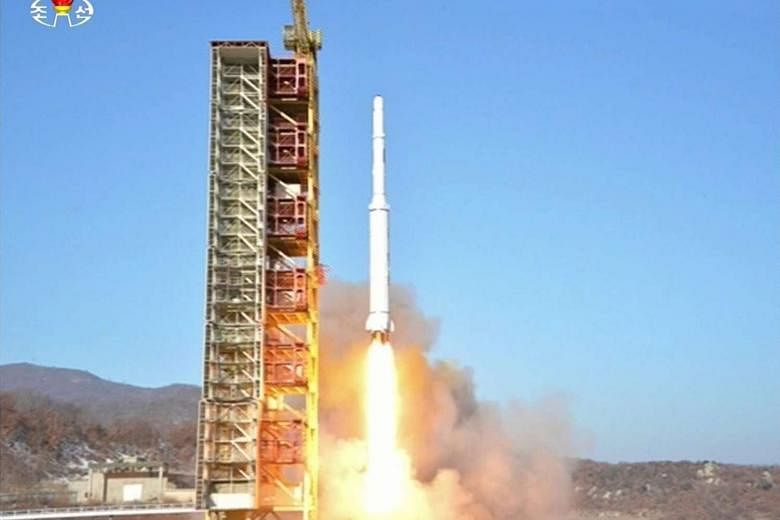WASHINGTON (REUTERS) - A satellite launched by North Korea at the weekend has now stabilised in its orbit around the Earth in a step forward from a satellite launch in 2012, a US official and a second source familiar with the matter said on Tuesday.
However, the satellite is not believed to be transmitting any data back to Earth, the second source said.
The satellite was initially tumbling in orbit but had now stabilised, making it more successful than a launch in 2012, which failed to achieve a stable orbit, said the first source, a US official who did not want to be identified by name.
"It's in a stable orbit now. They got the tumbling under control," the official said.
US Strategic Command, which is responsible to tracking rocket and missile launches and objects in space, declined comment on the status of the satellite.
The US government-backed Space-Track.org website shows the satellite in an orbit ranging from 473km to 509km and inclined 97.5 degrees north and south of the equator.
Charles Vick, senior technical analyst with GlobalSecurity.org website said the satellite appeared to be in stable orbit but no transmissions had been detected from it.
North Korea says the Kwangmyongsong-4 (KMS-4) is an Earth observation satellite. It said that the launch on Sunday morning Korean time was a "complete success" and that the satellite was making a polar orbit of Earth every 94 minutes.
So far, amateur satellite trackers have not been able to track it. "To date, I have not seen any visual or radio observation data on KMS-4," said Ted Molczan, a frequent contributor to the satellite-tracking website Heavens-Above.com.
John Schilling, an aerospace engineer and missile technology expert, said earlier Tuesday in a report on 38north.org, a website that monitors North Korea, that it would be "an important step forward" for North Korea if the satellite could maintain a stable orientation, given that in North Korea's previous attempt the satellite tumbled out of control shortly after launch.
"If it can perform any sort of maneuver using an onboard propulsion system that would be a bigger step forward," he said,"(and) radio signals from the satellite would mark critical progress for North Korea in another area, particularly if they occur over a prolonged period and show signs of two-way communication."
Schilling said it appeared North Korea had missed its target of a "sun-synchronous orbit," something particularly suitable for an Earth observation satellite, as it passes over targets at exactly the same local time every day. "This one will drift but should still be serviceable," he said.

